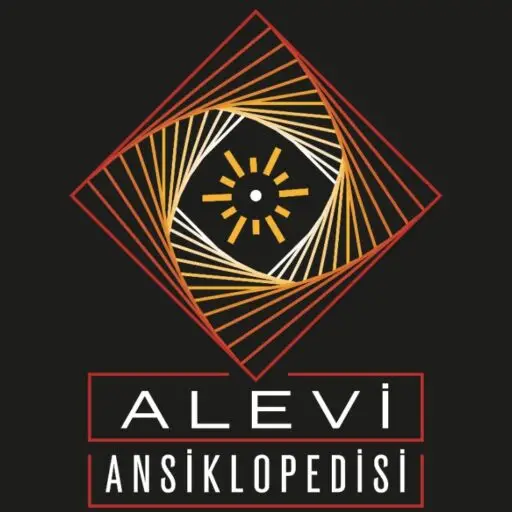There are multiple versions of this entry:
Gağan (2)
Gaxan in Dersim
The Raa Haq religious community and the Armenian Christians in Dersim celebrate the festival of Gaxan (Kırmanci “December”, also asme gağene – “month of Gaxan”; Turkish spelling: Gağan(t)) around the turn of the year. In Kırdaşkî/Kurmancî, the New Year is called Îda Sersalê and in Kırmanckî, it would rather be called Roşanê Sera Newe. Gaxan is derived from Armenian Kaġand, which in turn goes back to the Latin calendae (“calendar”, beginning of the year or month) via the Greek loan translation Kalantar. The associated rituals, such as house visits and singing songs, which are rewarded with sweets, extend from Georgia to Greece with regional variations and are said to resemble the Galandar (Alatakolos) festival of the Pontic Greeks from the Black Sea.[1] However, they are actually most similar to the pre-Christian and pre-Islamic traditions.
The Armenian people have experienced three different New Year celebrations in their history: Kağand, Navasard and Amanor. Just like the Kurdish culture, the Armenian culture is rooted in the Indoiranian culture. Until the 1st century BCE, the summer solstice marked the turn of the year in the Iranian highlands, which was celebrated with great harvest festivals. Under the Achaemenids (6th to 4th century BC), the spring equinox became the official start of the year (“Nouruz”). Under this influence, the Armenians also welcomed the new year on 21 March, which symbolizes the awakening of nature. In all Armenian provinces, Kaġand was celebrated with great festivities, and festive rituals were performed in the temples, accompanied by offerings to the gods.
The second Armenian New Year was celebrated on 1 Navasard (11 August), the day on which Hayk Nahapet, the mythical progenitor of the Armenians, defeated the titan Bel. Navasard is a day of fasting. Traditional dishes were made from legumes: beans (whose pod symbolized family unity and the bean, the family), lentils, dried fruit, nuts, etc. The New Year’s bread, in which a divination coin, the dovlat (from Turk. devlet – “state”), was placed during cooking, served as a table decoration. The bread was then cut into 12 equal pieces, and the family member who would receive the dovlat would be promised success in the new year. The Lenten dishes of the New Year on 1 Navasard have been incorporated into the current New Year’s celebrations.
The Christian Armenian dovlat corresponds to the Gaxan dish Babuko/Zirfet (Zere vet)/Sîr of the Raa Haq religious community, consisting of three pieces of wood, called devlet (in Turkish: state), cot-gar/cıtkar (farmer) and qismet (fate). Whoever finds the devlet when eating is considered the family’s lucky charm.
In the 18th century, Catholicos Simeon Yerevantsi introduced a calendar reform, after which the Armenians began to celebrate the new year on 1 January. The Eastern Armenians call the new year Amanor (“New Year”) or, more recently, Nor Tar, while the Western Armenians (including Dersim) continue to call it Kaġand.
A winter magician also appears at this celebration, who is called Kaġand Pap(uk), or Mets Papuk (“Kaġand grandfather”, “Great-Grandfather”). He is related to the historical church leader Catholicos Sahak Partev (Sahak the Parthian, c. 350 – c. 438), who, according to tradition, appeared with a shepherd’s or bishop’s staff and a sheepskin cloak.
Papuk Kaġand is a figure who preserves and transmits national values and the traditional ritual system to future generations. He is accompanied by the twelve Khlvliks (խլվլիկ – “cunning”) and Arales[2]: Areg, Antes, Ani and Yera, Push, Imastun (“wise”), Yegheg (“three”), Chtptik (“untouchable”), Parfar (“far away”), Aspet (“knight”), Charmazan (“without charm”) and Hazaran (“thousand”). Although Santa Claus, who visited children with his sleigh, did not give them any presents, he did give them seven pieces of advice for the New Year: mutual respect, peace, honesty, wisdom, hard work, modesty and contentment.
Members of the Raa Haq faith – Alevi Kurds as well as Alevized Armenians in Dersim – celebrate the three-day Gaxan in different ways in different regions between December 10 and January 12 of the following year, with a three-day fast. The festival “serves to make people look forward to the next year and treat each other peacefully, to end disputes between people before the next year begins and to make the next year full of joy, happiness, helpfulness, charity, friendship, peace and contentment. In addition, it is a sign of the past year, of the gratitude one carries within and for the gifts one has received in the past year, that one did not have to starve. It is about a peaceful life in solidarity between people and people, and animals and people. People pray for this and for all individuals, be they animals or humans, to be well and to lack nothing. If all needs are met for everyone, people ask for their needs to be met as well.[3]
It was a very old custom to cook fresh grain or millet during the Gaxan and feed it to one’s own animals. In this way, people showed their gratitude to their animals for the past year, when the animals had saved people from hunger and poverty with their produce.
After midnight, the women went to the wells to draw fresh water, which they used in the kitchen, in the storeroom for wheat and flour and in the stable as holy water to protect their house and family from harm. Before doing so, everyone said a prayer and drank a cup of water. This water was called awa sersala nuw/awe sera newe (the water of the new year).
After feeding the animals the boiled grain, they dipped a broom in a bucket of fresh water and sprinkled the animals with it.
The animals in the forest also received their share of each dish, which was placed on large plates and left under a tall tree. This share was taken to the forest collectively, as a group.
After setting down the plates, the people prayed again that the new year may end in peace and bliss and that all animals in the forest will live without disease and without conflict with humans. They also prayed that the animals should not be without food in the next year either. Finally, they lit three candles. They represent “ya →Xızır” (Hızır; Arab. al-Khidr – “the Green”)[4], “ya Mêhemend” (the Sun; the Prophet Muhammad), “ya Oli” (the Caliph Alī ibn Abi Ṭālib). In the faith of Raa Haq, the Islamic saint Xızır, as the embodiment of good and of cyclically renewing nature, fulfills the same task as the Armenian Pap(uk) Kaġand during the Gaxan festival.
In an interview in 2014, Gönul Kamer, who was born in Dersim in 1958, expressed the transcultural religious similarities and similarities between Armenian Christians and Alevis in Dersim:
“Today, some Armenians in Dersim seem to have become Alevi and continue their religion as Alevis, but in reality they live both cultures. We say, for example, ‘Hızır’. He is our Santa Claus, we worship the same. In Tunceli, the Alevis have lit candles, we have also lit candles, we have said our prayers. It’s pretty much the same. They fast for seven days, and so do we. Our customs and traditions are very similar.”[5]
ConclusionThe Gaxan festival in Dersim reflects a unique fusion of Kurdish Alevi (Raa Haq) and Armenian Christian traditions, rooted in pre-Christian and pre-Islamic seasonal celebrations. Its rituals, such as collective sharing, fasting, animal offerings, and water blessings, express a deep spiritual ethic of gratitude, solidarity, and peace between humans and non-humans. Gaxan serves not only as a New Year celebration but also as a living embodiment of transcultural memory, interfaith continuity, and the cyclical renewal of life. It remains a vibrant example of Dersim’s pluralistic sacred heritage.
References & Further Readings
Gündoğan, Kazım. Alevileş(tiril)miş Ermeniler: Dersimli Ermeniler-2; “Biz İsa’ya Tabiyiz, Ali’ye Mecburuz”. Istanbul: Ayrıntı Yayınları, 2022.
Hofmann, Tessa. “RAA HAQ – The Alevis in Dêrsim.” RAA Haq – The Alevis in Dêrsim (Blog), 18 July 2017. Available at: https://raahaq.wordpress.com/2017/07/18/first-blog-post/
Ishkol-Kerovpian, K. “Mythology of Pre-Christian Armenians.” In Dictionary of Mythology. I. Abteilung: Die alten Kulturvölker, Vol. IV, 1. Teil. Stuttgart: Klett Verlag, 1986, pp. 88–89.
“Gagan Fest in Dêrsim und weiteren Regionen.” Becoming German (Deutsch-Werden.de). Available at: https://deutsch-werden.de/de/gagan-fest-dersim-und-weiteren-regionen
- Alevi platform: RAA HAQ – The Alevis in Dêrsim. 18.07.2017, https://raahaq.wordpress.com/2017/07/18/first-blog-post/ ↩
- Literally “Licker of Ara [the Beautiful] the King”; also Arles or “yarles” (“constant lickers”): mythical dog-like creatures endowed with supernatural powers. They had the task of healing wounded warriors in battle by constantly licking them and bringing fallen warriors back to life. In popular belief, they were thought to be dog-shaped good spirits living in heaven who descend to revive the fallen by licking them. The village of Lezk’ in the province of Vaspurakan (Van) testifies that even towards the end of the 19th century, on the second Sunday after Easter, numerous people made a pilgrimage to the summit of the mountain near the village, where the center of worship of these spirits was located. -Cf. Ishkol-Kerovpian, K.: Mythology of Pre-Christian Armenians. In: Dictionary of Mythology. I. Abteilung: Die alten Kulturvölker. Vol. IV, 1.Teil, Stuttgart: Klett Verlag, 1986, pp. 88 f. ↩
- The Gağan festival in Dêrsim and other regions. “Becoming German”, https://deutsch-werden.de/de/gagan-fest-dersim-und-weiteren-regionen#google_vignette ↩
- Every year, the second week of February is celebrated as the “Week of Hızır” and in May the festival of Hıdırellez is celebrated. Hızır (Khidir, Khadhir, Khizer) is a patron saint who comes to the aid of people in need. Alevis believe that the holy brothers Hızır and Ilyas (Elias) lived as prophets and drank the so-called “water of immortality” (Abu Hayat/Abu Kevser) to help people, especially travelers (including the travelers on the mystical path). According to this belief, Hızır comes to their aid on land and Ilyas on the sea. They bring people luck and prosperity. ↩
- Gündoğan, Kazım: Alevileş(tiril)miş Ermeniler; Dersimli Ermeniler-2; “Biz İsa’ya Tabiyiz, Ali’ye Mecburuz”. Istanbul: Ayrıntı, 2022, p. 323 ↩


